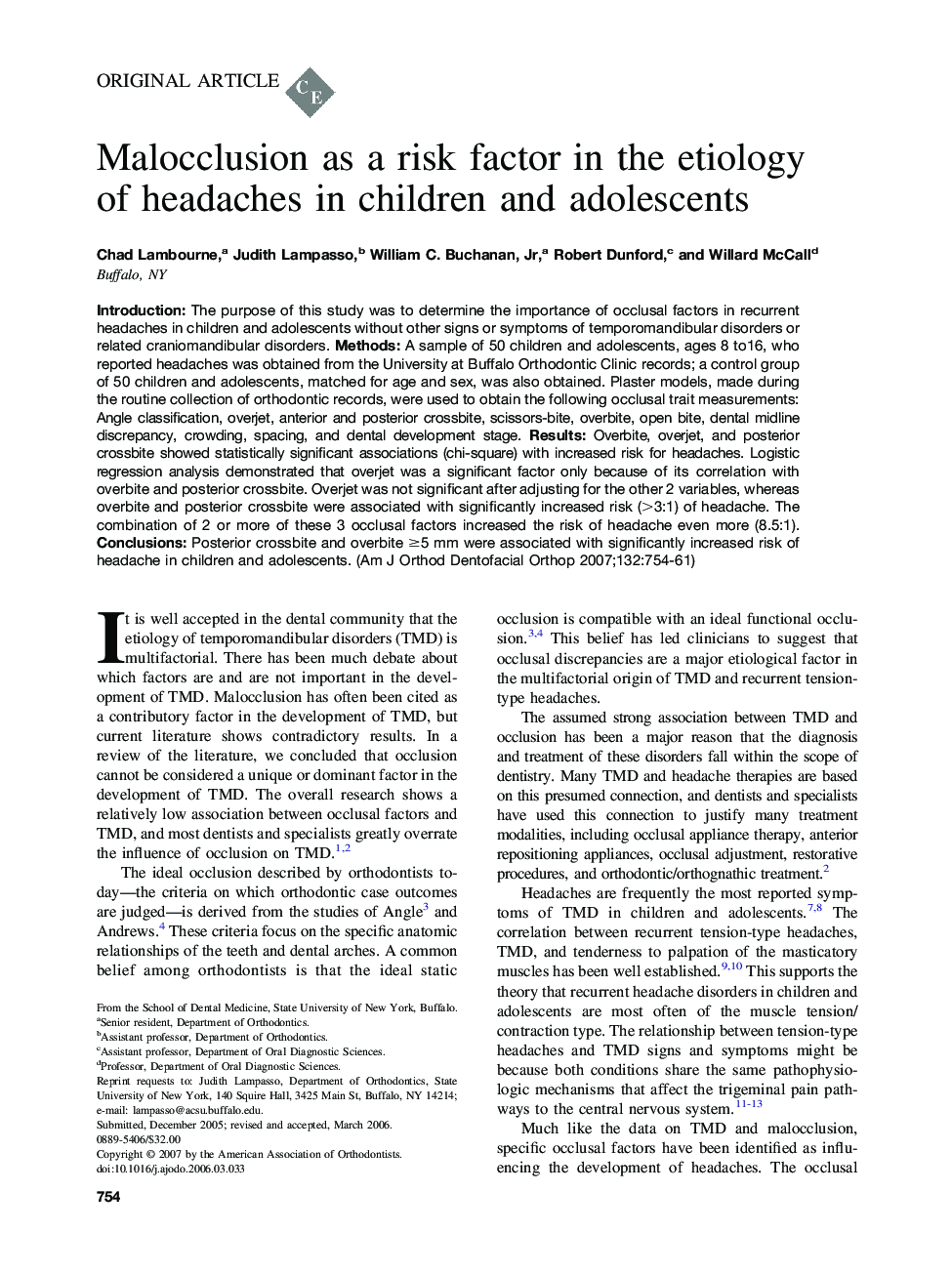| Article ID | Journal | Published Year | Pages | File Type |
|---|---|---|---|---|
| 3118630 | American Journal of Orthodontics and Dentofacial Orthopedics | 2007 | 8 Pages |
Introduction: The purpose of this study was to determine the importance of occlusal factors in recurrent headaches in children and adolescents without other signs or symptoms of temporomandibular disorders or related craniomandibular disorders. Methods: A sample of 50 children and adolescents, ages 8 to16, who reported headaches was obtained from the University at Buffalo Orthodontic Clinic records; a control group of 50 children and adolescents, matched for age and sex, was also obtained. Plaster models, made during the routine collection of orthodontic records, were used to obtain the following occlusal trait measurements: Angle classification, overjet, anterior and posterior crossbite, scissors-bite, overbite, open bite, dental midline discrepancy, crowding, spacing, and dental development stage. Results: Overbite, overjet, and posterior crossbite showed statistically significant associations (chi-square) with increased risk for headaches. Logistic regression analysis demonstrated that overjet was a significant factor only because of its correlation with overbite and posterior crossbite. Overjet was not significant after adjusting for the other 2 variables, whereas overbite and posterior crossbite were associated with significantly increased risk (>3:1) of headache. The combination of 2 or more of these 3 occlusal factors increased the risk of headache even more (8.5:1). Conclusions: Posterior crossbite and overbite ≥5 mm were associated with significantly increased risk of headache in children and adolescents.
